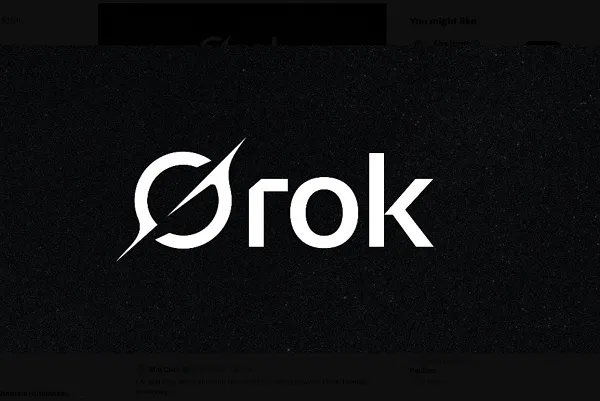Vitalik Buterin proposes swapping EVM language for RISC-V
Ethereum co-founder Vitalik Buterin has proposed replacing the current Ethereum Virtual Machine (EVM) contract language with the RISC-V instruction set architecture to improve the speed and efficiency of the Ethereum network's execution layer.Buterin's April 20 proposal outlined several long-term bottlenecks for scaling the Ethereum network including, stable data availability sampling, ensuring block production remains competitive, and zero-knowledge EVM proving.The Ethereum co-founder argued that implementing the RISC-V architecture in smart contracts would keep block production markets competitive and improve the efficiency of zero knowledge functions for the execution layer. Buterin wrote:"The beam chain effort holds great promise for greatly simplifying the consensus layer of Ethereum, but for the execution layer to see similar gains, this kind of radical change may be the only viable path."The proposal highlights the Ethereum network's struggle to improve throughput and remain competitive with next-generation monolithic blockchains such as Solana and the Sui networks at a time when investors are losing confidence in the original smart contract blockchain.Buterin provides numbers suggesting that implementing the proposal could lead to efficiency gains of 100x. Source: Vitalik ButerinRelated: Vitalik Buterin unveils roadmap for Ethereum privacyEthereum's scaling woes and a collapse of Ether's priceEthereum's blob fees, transaction fees taken from Ethereum layer-2 scaling networks, dropped to a weekly low of 3.18 Ether (ETH) during the week of March 30, according to data from Etherscan.Using current Ether prices, the 3.18 ETH collected for blob fees during the period equaled approximately $5,000.In April 2025, Ethereum network fees dropped to their lowest levels since 2020, averaging around $0.16 per transaction.According to Santiment marketing director Brian Quinlivan, the dramatic reduction in fees is due to fewer users sending transactions on the Ethereum base layer, opting instead to use smart contracts or one of Ethereum's many layer-2 scaling solutions.Ethereum network weekly transaction fees declined significantly in Q1 2025. Source: Token TerminalEthereum's layer-2 networks have been described as a double-edged sword that dramatically lowered transaction costs on the base layer but also cannibalized the Ethereum base layer's revenue.Concerns surrounding revenue generation on the base layer and the corrosive effects of layer-2 scaling solutions on Ethereum's market share have driven the price of Ether to historic lows and could plunge Ether prices further to around $1,100 if investor confidence continues to wane.Magazine: Proposed change could save Ethereum from L2 ‘roadmap to hell’



Ethereum co-founder Vitalik Buterin has proposed replacing the current Ethereum Virtual Machine (EVM) contract language with the RISC-V instruction set architecture to improve the speed and efficiency of the Ethereum network's execution layer.
Buterin's April 20 proposal outlined several long-term bottlenecks for scaling the Ethereum network including, stable data availability sampling, ensuring block production remains competitive, and zero-knowledge EVM proving.
The Ethereum co-founder argued that implementing the RISC-V architecture in smart contracts would keep block production markets competitive and improve the efficiency of zero knowledge functions for the execution layer. Buterin wrote:
"The beam chain effort holds great promise for greatly simplifying the consensus layer of Ethereum, but for the execution layer to see similar gains, this kind of radical change may be the only viable path."
The proposal highlights the Ethereum network's struggle to improve throughput and remain competitive with next-generation monolithic blockchains such as Solana and the Sui networks at a time when investors are losing confidence in the original smart contract blockchain.
Related: Vitalik Buterin unveils roadmap for Ethereum privacy
Ethereum's scaling woes and a collapse of Ether's price
Ethereum's blob fees, transaction fees taken from Ethereum layer-2 scaling networks, dropped to a weekly low of 3.18 Ether (ETH) during the week of March 30, according to data from Etherscan.
Using current Ether prices, the 3.18 ETH collected for blob fees during the period equaled approximately $5,000.
In April 2025, Ethereum network fees dropped to their lowest levels since 2020, averaging around $0.16 per transaction.
According to Santiment marketing director Brian Quinlivan, the dramatic reduction in fees is due to fewer users sending transactions on the Ethereum base layer, opting instead to use smart contracts or one of Ethereum's many layer-2 scaling solutions.
Ethereum's layer-2 networks have been described as a double-edged sword that dramatically lowered transaction costs on the base layer but also cannibalized the Ethereum base layer's revenue.
Concerns surrounding revenue generation on the base layer and the corrosive effects of layer-2 scaling solutions on Ethereum's market share have driven the price of Ether to historic lows and could plunge Ether prices further to around $1,100 if investor confidence continues to wane.
Magazine: Proposed change could save Ethereum from L2 ‘roadmap to hell’














![31 Top Social Media Platforms in 2025 [+ Marketing Tips]](https://static.semrush.com/blog/uploads/media/0b/40/0b40fe7015c46ea017490203e239364a/most-popular-social-media-platforms.svg)



































































































































































![How to Find Low-Competition Keywords with Semrush [Super Easy]](https://static.semrush.com/blog/uploads/media/73/62/7362f16fb9e460b6d58ccc09b4a048b6/how-to-find-low-competition-keywords-sm.png)